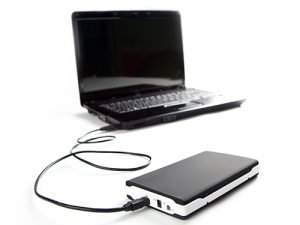Transporting heavy equipment is an essential task in many industries, including construction, mining, and agriculture. Moving heavy equipment requires careful planning, specialized equipment, and skilled operators to ensure a safe and successful transport by courier companies. In this blog post, we will provide some tips and tricks for safely transporting heavy equipment.
1. Choose the Right Equipment.
Choosing the right equipment is critical to safely transporting heavy equipment. The type of equipment you need will depend on the size and weight of the load and the distance it needs to travel. Some common types of equipment used for heavy equipment transport include lowboy trailers, flatbed trailers, and specialized hydraulic trailers. Consult with a professional transport company to determine the best equipment for your specific needs.
2. Plan the Route.
Planning the transport route is essential to ensuring a safe and successful transport. When planning the route, consider factors such as the size and weight of the load, road conditions, and any potential obstacles or hazards along the way. Be sure to obtain any necessary permits or approvals for oversized or overweight loads.
3. Perform a Pre-Transport Inspection.
Performing a pre-transport inspection is critical to identifying any potential issues or safety hazards before the transport. Inspect the equipment for any damage or wear and tear, and ensure that it is secured properly on the trailer. Make sure that all safety equipment, such as lights and brakes, are in good working order.[/vc_column_text][vc_column_text css_animation=”fadeInUp”]
4. Secure the Load.
Securing the load is one of the most important steps in safely transporting heavy equipment. Use appropriate chains, straps, and tie-downs to secure the load to the trailer, and make sure that the load is evenly distributed and centered on the trailer. Use appropriate padding to protect the equipment from damage during transport.
- Use ratchet straps. Ratchet straps are an excellent option for securing loads, as they provide a quick and easy way to secure the load in place. They’re also ideal for situations where you need to frequently remove or replace your tie-downs (for example, if you’re transporting equipment from one job site to another).
- Use tie down hooks. Tie down hooks can be used on their own or in conjunction with ratchet straps, but they offer a few advantages over traditional nylon webbing: they’re easier to store and less likely than rope or chain to get tangled up around other objects inside your vehicle. They also have less stretch than nylon webbing so they don’t loosen over time under heavy loads like some other materials may do–a good thing when transporting heavy machinery!
- Use chain instead of rope when possible; it holds better under greater load weights than rope does; however keep in mind that chains have sharp edges which could puncture through some types of material such as plastics so keep them away from these areas if possible – otherwise use something else like wire cable instead since this won’t cause any damage whatsoever!”
5. Use Experienced Operators.
Transporting heavy equipment requires skilled and experienced operators to ensure a safe and successful transport. Make sure that your operators have the necessary training and experience to handle the specific equipment being transported. Ensure that they are familiar with the transport route and any potential hazards along the way.
6. Follow Best Practices for On-Road Safety.
Following best practices for on-road safety is critical to minimizing the risk of accidents during transport. Keep a safe distance from other vehicles, maintain a safe speed, and use caution when passing or merging. Use warning lights and signage to alert other drivers to the presence of an oversized or overweight load.
7. Place the load in the center of the vehicle.
When transporting heavy equipment, it’s important to secure your load with tie down straps. The load should be centered in the vehicle and secured to both sides of the trailer. A good rule of thumb is to use one strap per foot of length, so if you have an 8-foot long piece of machinery, you’ll want four straps total (two on each side).
You may also want to invest in some ratcheting tie down straps so that you can quickly tighten them without having to reach around or under your cargo at all times. These types will also make it easier for other people who might need access while driving; they just need to pull on a lever instead!
8. Use wheel chocks.
The wheel chock is a device that can be placed in front of each wheel to prevent the vehicle from rolling. They are commonly used on trucks, tractors and trailers. Wheels must be blocked in a straight line before you place wheel chocks under them so that they don’t roll while you are working on your vehicle or trailer.
9. Safely transporting heavy equipment can be done with some preparation.
If you’re planning on transporting heavy equipment, there are some important things to keep in mind. The first step is to use a sling to secure the load. Then place it in the center of your vehicle so that it won’t shift around as much during transport. Finally, use wheel chocks (or blocks) to further stabilize your vehicle and prevent movement from any direction.
Conclusion.
Safely transporting heavy equipment requires careful planning, specialized equipment, and skilled operators. By choosing the right equipment, planning the route, performing a pre-transport inspection, securing the load, using experienced operators, and following best practices for on-road safety, you can help ensure a safe and successful transport. Consult with a professional transport company to ensure that your heavy equipment transport is properly planned and executed.







